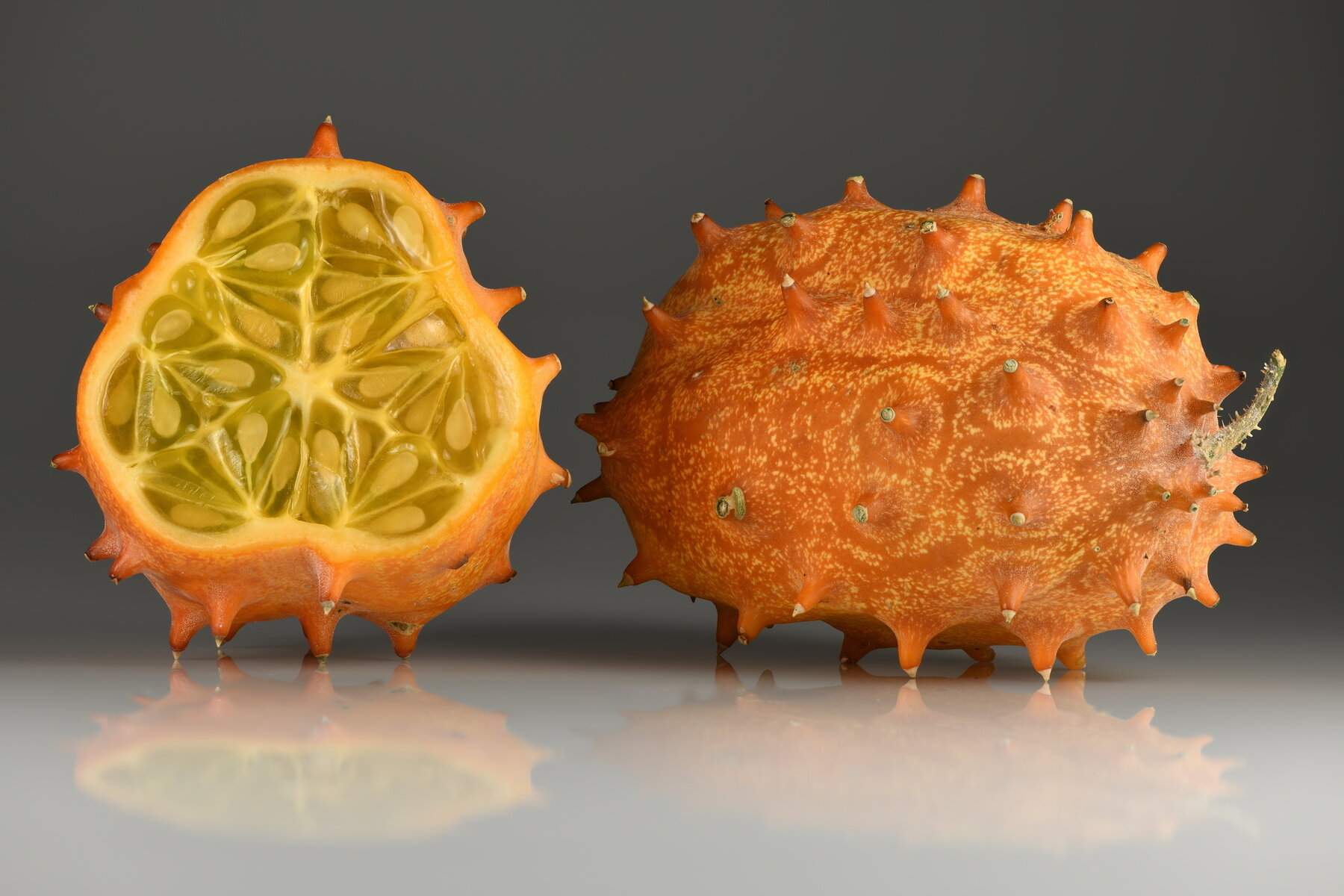
What is a kiwano? This spiky, orange fruit, also known as horned melon or African horned cucumber, might look like it belongs in a sci-fi movie, but it’s very real and packed with surprises. Originating from Africa, kiwano has a unique appearance with its bright orange skin covered in small, horn-like spines. Inside, the fruit reveals a vibrant green, jelly-like flesh filled with edible seeds. Kiwano tastes like a mix of cucumber, kiwi, and banana, making it a refreshing and exotic addition to your diet. Rich in vitamins, antioxidants, and water content, this fruit is not just a visual treat but also a nutritional powerhouse. Whether you’re curious about its health benefits, culinary uses, or just want to impress friends with fun facts, kiwano has something for everyone.
What is Kiwano?
Kiwano, also known as horned melon or African horned cucumber, is a unique fruit with a spiky orange rind and vibrant green, jelly-like flesh. Native to Africa, it's gaining popularity worldwide for its intriguing appearance and refreshing taste. Let's dive into some fascinating facts about this exotic fruit.
-
Origin: Kiwano originates from the Kalahari Desert in Africa. It's been cultivated there for centuries.
-
Botanical Name: Its scientific name is Cucumis metuliferus. It belongs to the cucumber and melon family.
-
Appearance: The fruit's spiky, orange skin makes it look like something out of a sci-fi movie. Inside, the flesh is bright green and jelly-like.
-
Taste: The flavor is a mix of banana, cucumber, and lime. Some even detect hints of kiwi and zucchini.
Nutritional Benefits of Kiwano
Kiwano isn't just a pretty face; it's packed with nutrients that can benefit your health in various ways.
-
Low in Calories: One kiwano contains only about 44 calories, making it a great snack for those watching their weight.
-
Rich in Vitamin C: This fruit is an excellent source of vitamin C, which boosts the immune system and promotes healthy skin.
-
High in Antioxidants: Kiwano is loaded with antioxidants that help fight free radicals in the body, reducing the risk of chronic diseases.
-
Hydration: With a water content of around 90%, kiwano is incredibly hydrating, perfect for hot summer days.
How to Eat Kiwano
Eating kiwano might seem tricky at first, but it's quite simple once you know how.
-
Cutting: Slice the fruit in half lengthwise to reveal the jelly-like flesh inside.
-
Scooping: Use a spoon to scoop out the flesh. The seeds are edible, so no need to remove them.
-
Smoothies: Add kiwano to smoothies for a refreshing, tropical twist.
-
Salads: The fruit's unique texture and flavor make it a great addition to fruit salads.
Kiwano in Culture and History
Kiwano has a rich cultural and historical background that adds to its allure.
-
African Staple: In Africa, kiwano has been a staple food for centuries, especially in arid regions where other crops struggle to grow.
-
Symbolism: In some African cultures, kiwano symbolizes fertility and abundance.
-
Global Spread: The fruit was introduced to New Zealand and Australia in the 1930s and has since spread to other parts of the world.
-
Culinary Uses: Beyond being eaten fresh, kiwano is used in various culinary applications, including sauces, desserts, and cocktails.
Growing Kiwano
Interested in growing your own kiwano? Here are some tips to get you started.
-
Climate: Kiwano thrives in warm, sunny climates. It requires a long growing season to mature.
-
Soil: Well-drained, sandy soil is ideal for growing kiwano. Ensure the soil is rich in organic matter.
-
Watering: Regular watering is essential, especially during dry spells. However, avoid waterlogging the soil.
-
Pests: Watch out for common pests like aphids and cucumber beetles. Organic pesticides can help keep them at bay.
Fun Facts About Kiwano
Here are some quirky and fun facts that make kiwano even more interesting.
-
Nicknames: Besides horned melon, kiwano is also called jelly melon and hedged gourd.
-
Longevity: Kiwano has a long shelf life. It can last several months without refrigeration.
-
Decorative Use: Due to its striking appearance, kiwano is often used as a decorative element in fruit bowls and centerpieces.
-
Space Food: NASA has considered kiwano as a potential food source for astronauts due to its nutritional value and long shelf life.
-
Crossbreeding: Kiwano can crossbreed with other cucumbers and melons, leading to interesting hybrid fruits.
-
Popularity: The fruit has gained popularity in gourmet cooking and is often featured in high-end restaurants for its exotic appeal.
The Final Slice
Kiwano, also known as horned melon, is more than just a funky-looking fruit. Packed with nutrients like vitamin C, iron, and magnesium, it’s a health powerhouse. Its unique taste, a mix of banana, cucumber, and lime, makes it a versatile addition to both sweet and savory dishes. This spiky fruit isn’t just about looks; it’s got substance too. From boosting immunity to aiding digestion, kiwano offers a range of health benefits. Plus, it’s low in calories, making it a great snack for those watching their weight. Whether you’re adding it to a salad, blending it into a smoothie, or just eating it straight, kiwano brings a burst of flavor and nutrition. So next time you spot this exotic fruit at the market, give it a try. You might just find your new favorite snack.
Was this page helpful?
Our commitment to delivering trustworthy and engaging content is at the heart of what we do. Each fact on our site is contributed by real users like you, bringing a wealth of diverse insights and information. To ensure the highest standards of accuracy and reliability, our dedicated editors meticulously review each submission. This process guarantees that the facts we share are not only fascinating but also credible. Trust in our commitment to quality and authenticity as you explore and learn with us.
